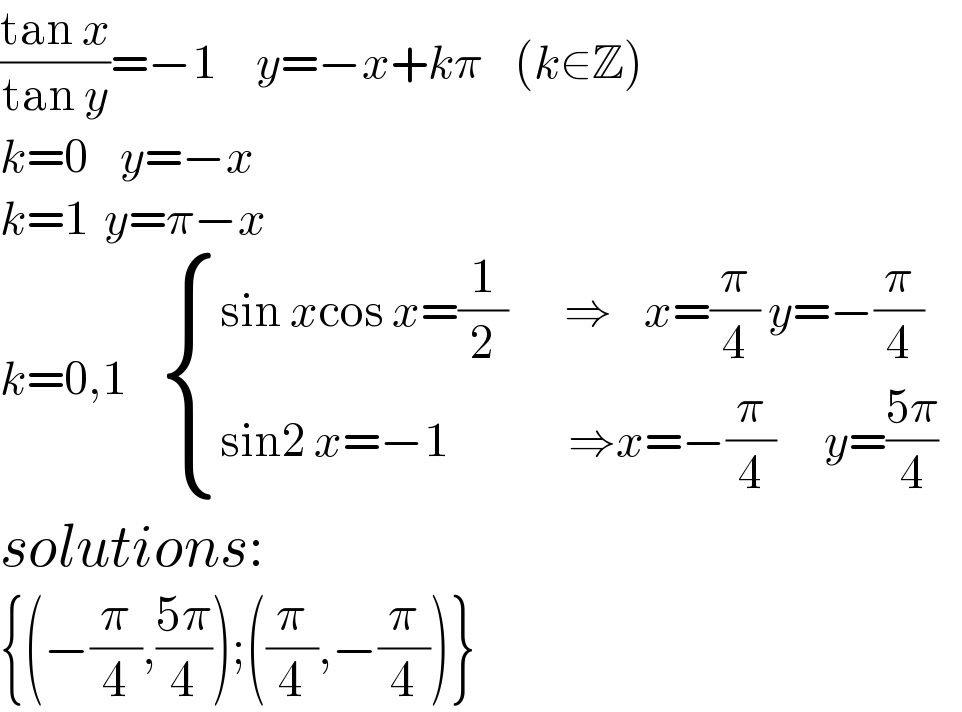
Question and Answers Forum
Question Number 185794 by Rupesh123 last updated on 27/Jan/23

Commented by Rupesh123 last updated on 27/Jan/23
Solve in R
Answered by a.lgnaoui last updated on 27/Jan/23

Commented by MJS_new last updated on 27/Jan/23

Answered by a.lgnaoui last updated on 28/Jan/23

